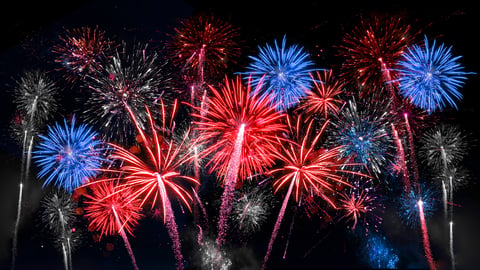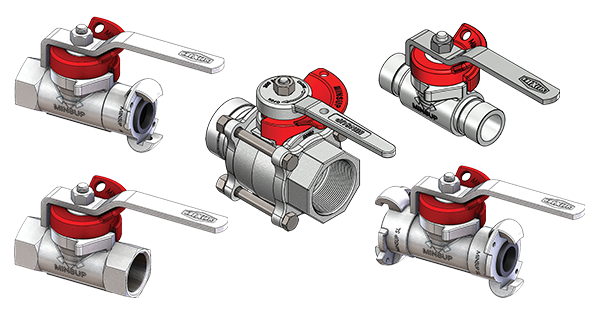
Since their invention in China some 2,000 years ago, fireworks have endured as a popular way to celebrate a variety of events. From Guy Fawkes Day in the United Kingdom and Diwali in India, to Bastille Day in France, Independence Day in the United States, Christmas in Columbia, and New Year in Asia, nearly every culture in the world uses fireworks to mark special occasions.
History of Fireworks
China is the world’s largest producer and exporter of fireworks, which is fitting considering the Chinese invented not only fireworks, but their core ingredient: gunpowder or black powder. Legend has it that more than 1,000 years ago, a Chinese cook working in a field kitchen accidentally mixed saltpeter or potassium nitrate, charcoal, and sulfur together and the mixture burned. When it was compressed in a bamboo tube, this black powder exploded with a brief golden glow, and the firecracker was born.
Explorer Marco Polo is said to have transported gunpowder with him in the 13th century to Europe, where it was used by the military. The Italians were the first Europeans to use gunpowder for fireworks and by the 1400s, Florence, Italy, was the center of fireworks manufacturing in the world.
Elaborate fireworks displays quickly became a favorite method for marking religious festivals and royal celebrations around the world. Anne Boleyn’s coronation in 1533 featured a fire-spewing papier-mache dragon. Shakespeare mentioned fireworks in his works and they served as an inspiration to George Frideric Handel, who composed his “Music for the Royal Fireworks” in 1749.
Around 1830, Italian craftsmen realized that by adding metals that burned at high temperatures to their fireworks they could create new effects such as color and sound. They enclosed their mixes in paper shells and wrapped them in paper, glue, and string. It’s a design still used today.

Illustration of fireworks at the opening of the Statue of liberty in 1886; Photo courtesy of iStock, duncan1890
Fireworks were a part of the U.S. from the country’s very beginning. In 1775, future President John Adams set the tradition of pairing fireworks and July 4 when he wrote of his vision for the country’s first Independence Day celebration in 1776. “The day [Independence Day] will be the most memorable in the history of America … it ought to be solemnized with pomp and parade … bonfires and illuminations [fireworks] from one end of the continent to the other, from this day forward evermore.”
The illuminations on display across continents today still have black powder at their core, but displays have gotten bigger, brighter, and more elaborate. In fact, the largest recorded fireworks display was held in the Philippines during the countdown to 2016. The show featured 810,904 fireworks and lasted 1 hour, 1 minute and 32.35 seconds.
For more articles exploring the world and its industries, revisit our Boss Magazine issues.

Chemistry Behind Fireworks Effects
From chrysanthemums, willows, and peonies to palms, spiders, and diadems, fireworks appear in many different shapes and colors. Here’s the chemistry behind some favorite fireworks effects:
- Aluminum: A common component of sparklers that produces silver and white flames and sparks
- Antimony: Creates firework glitter effects
- Barium: Creates green colors in fireworks, and can also help stabilize other volatile elements
- Calcium: Used to deepen fireworks colors, and calcium salts produce orange fireworks
- Copper: Produces blue colors in fireworks
- Iron: Makes sparks, the color of which is determined by the heat of the metal
- Lithium: A metal used to impart a red color to fireworks
- Magnesium: Burns a very bright white and is used to add white sparks or improve overall brilliance of a firework
- Potassium: Helps oxidize fireworks mixtures
- Strontium: Strontium salts impart a red color to fireworks and strontium compounds stabilize fireworks mixtures
- Titanium: Can be burned as powder or flakes to produce silver sparks
- Zinc: A bluish white metal used to create smoke effects
What do all of these have in common? Aside from being used to make fireworks, they are all mined elements. Whether extracted directly from the Earth, or refined from other minerals, mining operations are essential to providing the elements needed to create the dazzling effects viewers have come to know and love.

Dixon Mining Products
Commodities mined in the U.S., as well as global mining operations, are vital for fireworks. Dixon is delighted to provide a variety of products to support underground, surface, placer, or in-situ mining.
Application
- Recommended for use on air lines for virtually any type of pneumatic equipment
Features
- Universal head that is identical for all parts (hose ends, male NPT, and female NPT) within the ¼” to 1” range
- Banded or permanently attached
- Ferrules can be swaged or crimped depending on coupling installation requirement
Specification
- Maximum working pressure: 150 PSI at ambient temperature 70°F (21°C)
Applications
- Coupling for air only, commonly used in construction and mining; excels in services where ease, economy, safety, and speed are paramount
Features
- Pressure-activated gasket allows for easy coupling (less than 15 lbs. of force is required to connect the coupling gasket seal upon introduction of line pressure)
- Safety pin is supplied with each coupling and is required as a safety precaution
Materials
- Body: SG iron AS1831 400-250-12
- Bellows seal: natural rubber, other seal material available upon request
Specification
- Working pressure: 200 PSI at ambient temperature 70°F (21°C)

Application
- The Econovalve series of ball valves are solidly constructed and designed for rugged service such as the mining and construction industries. The unique one-piece ball and stem provides positive on/off action
Materials
- Body: spheroidal graphite cast iron to ISO 1083-1987; 400-250-15 SGI
- Seals: nitrile butadiene
- Handle: pressed mild steel
- Ball and stem: spheroidal graphite cast iron to ISO 1083-1097; copper chrome plated to AS1992
- Bolts: hex, M10 x 1.5 x 90, grade 8, black
- Nuts: hex, M10 x 1.5, grade 8, zinc plated
Specification
- Working pressure: 300 PSI at 70°F (21°C)
Ground Joint Air Hammer Couplings
Application
- Used with Boss® clamps for construction, maintenance repair operations (MRO), mining, steel processing, and transportation
Features
- Rounded steel head of stem fits concave inserts in spuds for superior sealing
- Metal-to-metal copper seat seal
Applications
- Agriculture, irrigation, mining, water remediation, and water suction and discharge
Features
- Inner surface has dual gripping ridges
- Bolt lugs are reinforced to prevent bending out of alignment
Materials
- Investment cast carbon steel and plated iron
Applications
- Construction, maintenance repair operations (MRO), mining, steel processing, and transportation
Features
- 2, 4, and 6-bolt type
- 2, 3, 4, or 6-gripping fingers
Materials
- Brass, investment cast carbon steel, stainless steel, and zinc plated iron
Specification
- Recommended for steam service up to 450°F (232°C)
Applications
- Designed for on-site refueling of construction, mining, forestry, and agricultural equipment
Features
- 1-1/2” female NPT
- Integrated high-flow swivel and sealing plug
- Plug/bumper assembly gives a complete nose seal
Materials
- Investment cast aluminum housing
- Anodized aluminum non-wear parts
- Stainless steel wear components
Specifications
- Ball-lock can flow over 180 GPM with a 1-1/2” hose and over 211 GPM with a 2” feed hose and a high-pressure nozzle shut-off
- Dog lock can flow up to 180 GPM with a 1-1/2” hose and over 211 GPM with a 2” feed hose and a high-pressure nozzle shut-off
- Working pressure: 125 PSI
- Standard shutoff set at 8.0 PSI
The products listed above are a small sample of what Dixon supplies for the mining industry. For a complete list of products, check out the mining market page on our website.
Summary
More than just a collection of colored lights and sounds, the pyrotechnics that inspire ‘oohs’ and ‘aahhs’ around the world have captivated audiences throughout history. Requiring craftsmanship and precision, fireworks are a testament to human creativity, the power of chemistry, and the importance of mining.
For more information, visit dixonvalve.com or call 877.963.4966.








